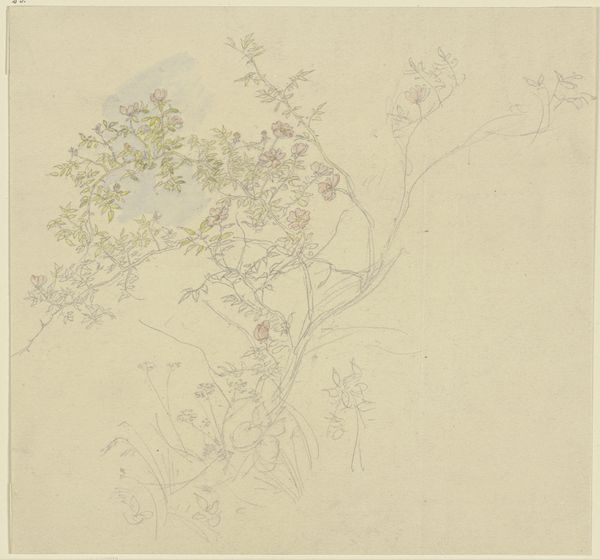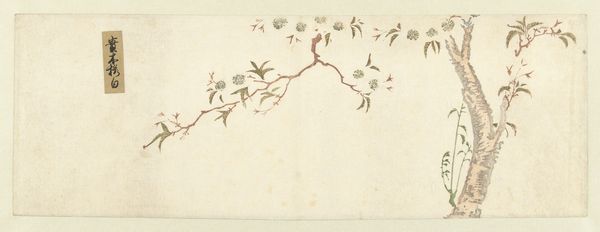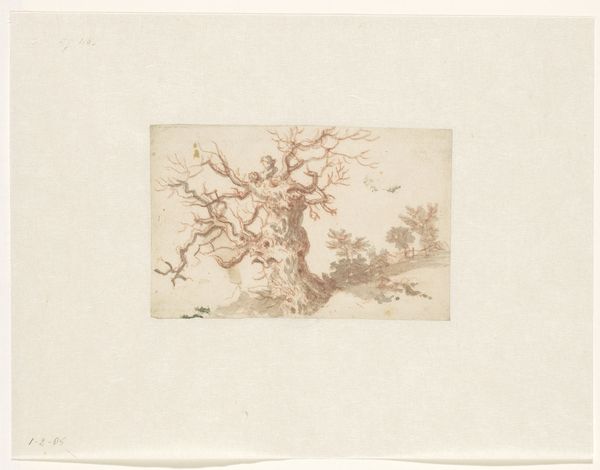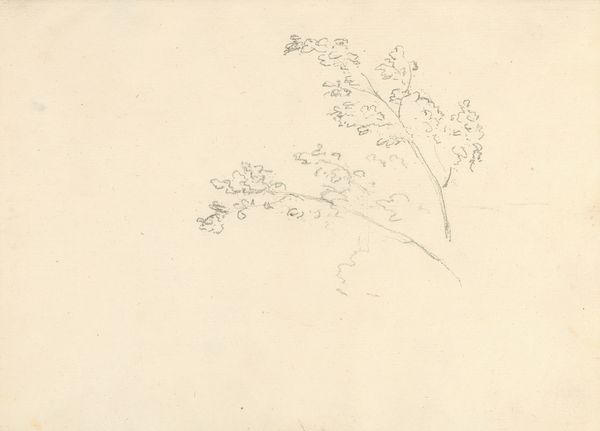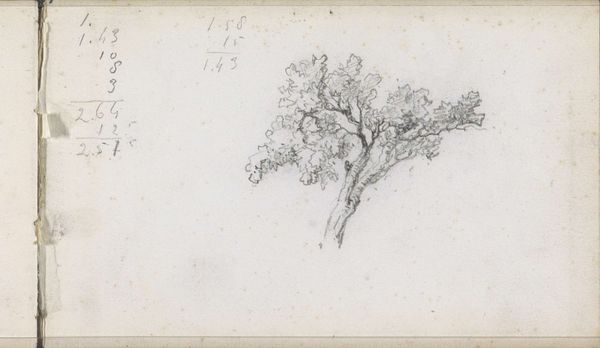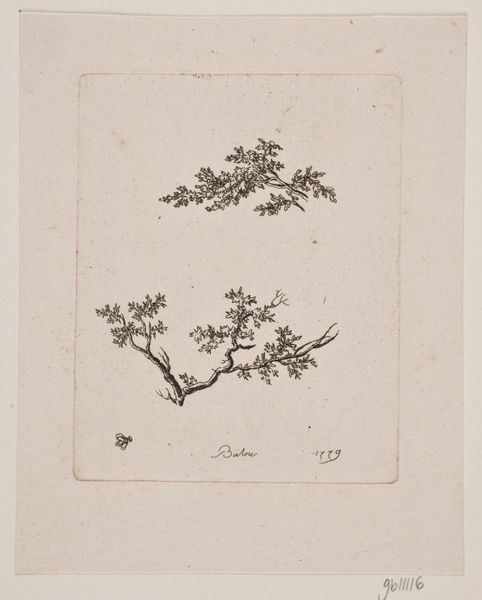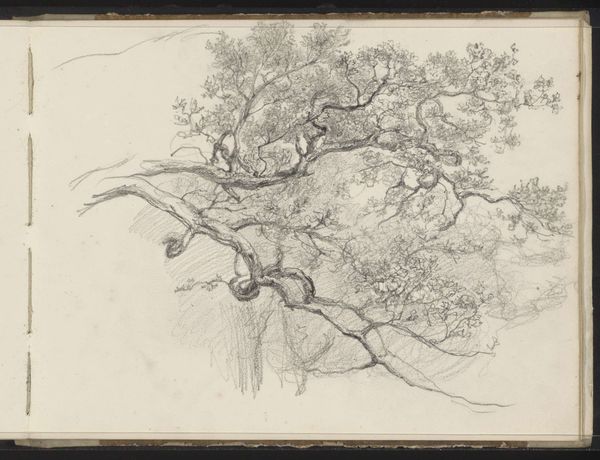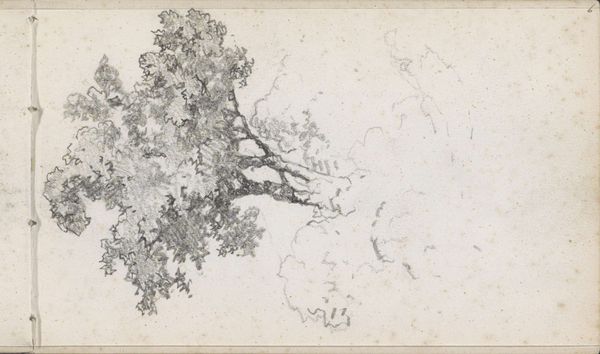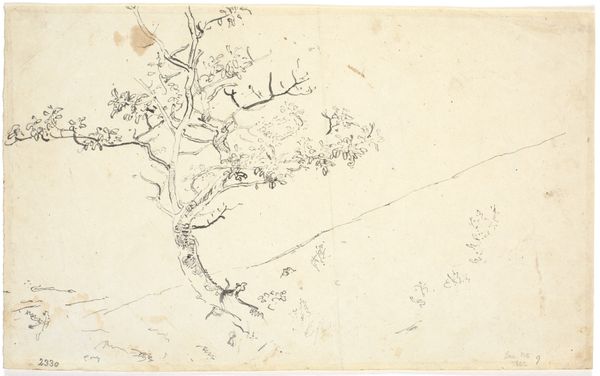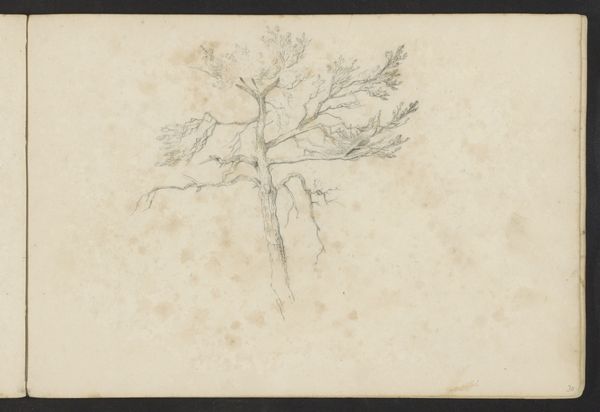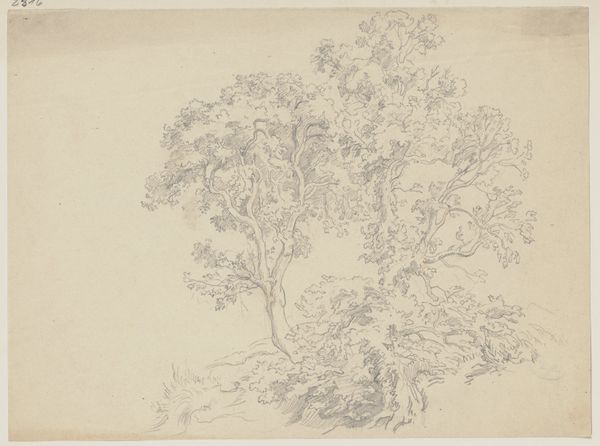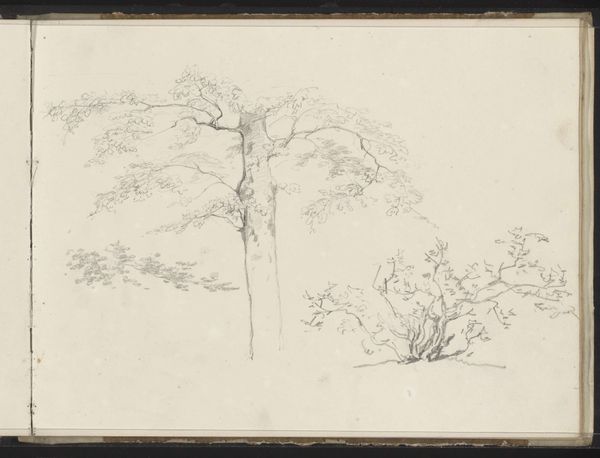
Design for the Decoration of Firearms 1772 - 1830
0:00
0:00
drawing, paper, pencil
#
drawing
#
neoclacissism
#
pencil sketch
#
landscape
#
paper
#
pencil
#
academic-art
Dimensions: 2 x 4 7/8 in. (5.1 x 12.4 cm)
Copyright: Public Domain
Editor: Here we have Nicolas Noël Boutet’s “Design for the Decoration of Firearms,” dating from around 1772 to 1830. It’s a delicate pencil drawing on paper, featuring an oak branch. There’s something so understated and elegant about its simplicity. How do you interpret this work, and what historical contexts do you find particularly relevant? Curator: What strikes me is the inherent tension between the beauty of the natural world depicted and its intended use in decorating instruments of violence. During this period, Neoclassicism dominated, often idealizing forms. Boutet, designing for firearms, likely grappled with how to imbue these objects with status and artistic merit. Consider, though, that weaponry production often served state power. What narratives of domination are subtly embedded here? How does adorning a gun naturalize or obscure the violence it inflicts, both on an individual level and as a symbol of colonial expansion? Editor: That's fascinating. So the very act of decorating a firearm transforms it into something more than just a weapon; it becomes a statement of power and perhaps even a kind of perverse status symbol? Curator: Exactly. And let’s also consider who would own such a weapon. Likely someone of privilege, deeply invested in the societal hierarchies it protected. The seemingly innocent oak branch, a symbol of strength and endurance, reinforces this association. In what ways can we see this piece, beautiful as it is, as subtly complicit in systems of oppression? Editor: I hadn’t considered it that way initially. Seeing it through a lens of power dynamics and social stratification really opens up new perspectives on its meaning. Curator: It's a reminder that even seemingly innocuous designs can be deeply implicated in broader socio-political narratives. Understanding those connections is key to truly understanding the artwork itself. Editor: Absolutely. Thank you – I'll never look at decorative arts the same way.
Comments
No comments
Be the first to comment and join the conversation on the ultimate creative platform.
